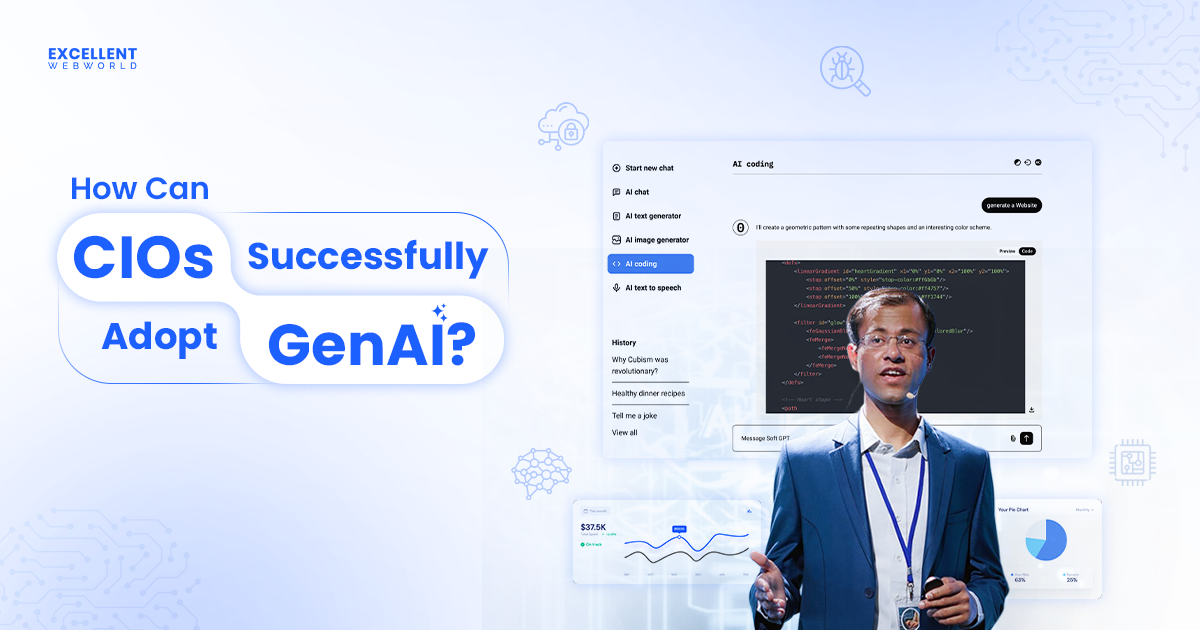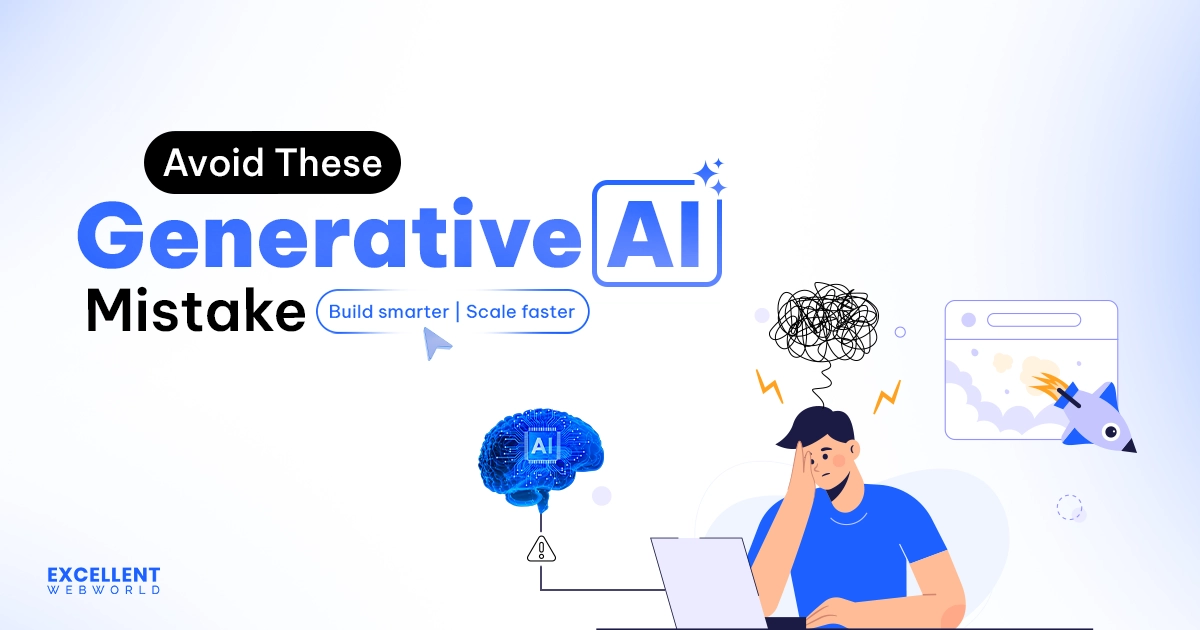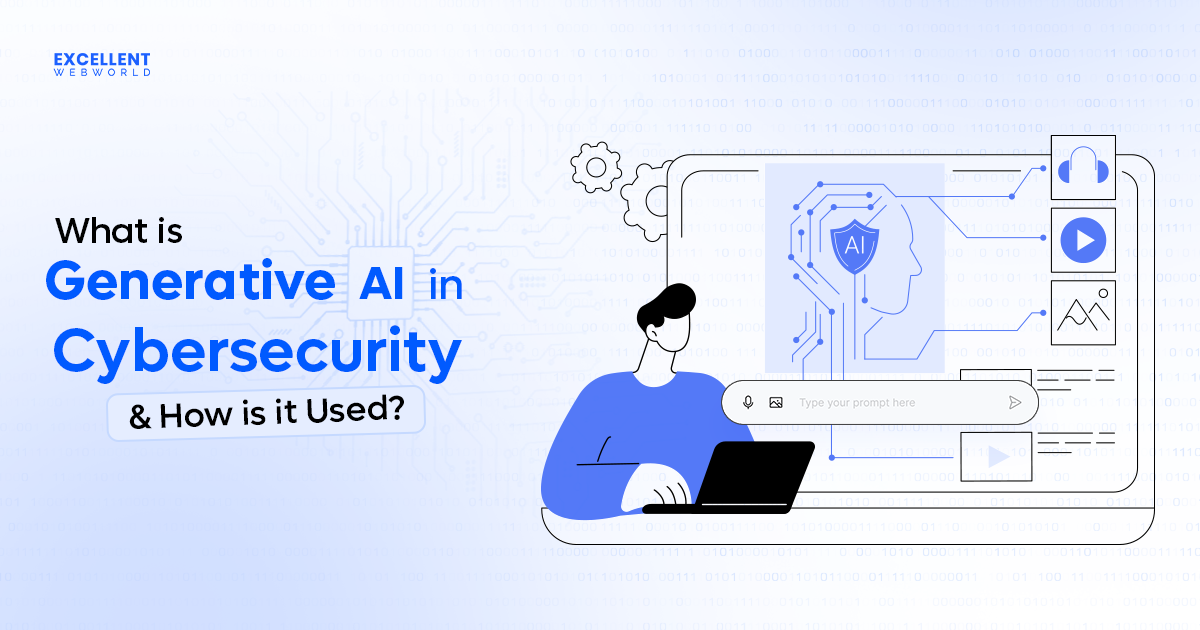Think GenAI is just hype? Your competitors don’t.
Generative AI has changed how companies operate. From smart chatbots to automated content creation, it’s changing the way work gets done. Even giants like Google, Microsoft, and Salesforce are leading the way with real-world generative AI use cases baked into their tools.
Trends like generative AI integration, voice automation, and AI copilots are grabbing markets fast. But with all this innovation, one big query remains: what will actually work for your business?
That’s where a generative AI Proof of Concept (PoC) comes in. Instead of guessing, a generative AI PoC helps you validate ideas on a small scale before making a big investment. It reduces risks, reveals early growth, and gives you a clear direction for generative AI implementation.
Whether you’re launching a new GenAI initiative, exploring rapid generative AI prototyping, or aiming for long-term digital transformation, a well-structured PoC helps you move smarter and faster—with expert guidance from leading AI consulting services.
Let’s look at why starting with a PoC can make or break your GenAI journey.
Pinpointing High-Value Business Problems for GenAI PoCs
Creating a Generative AI proof of concept comes with unique Generative AI challenges, but here’s the most important one to address first: identifying a real, valuable business problem to solve. A good generative AI PoC doesn’t start with the tech—it begins with a challenge that’s costing your team time, money, or missed opportunities.
Here’s a quick checklist to spot PoC-worthy AI Implementation challenges in your business:
Here are a few real-world examples you should go through
Map Your Business Problem to a GenAI Solution
Use a visual tool like napkin.ai to sketch ideas quickly. Just describe the business challenge, and it helps you generate possible generative AI project ideas like
Start with the basics; even a napkin sketch can turn into a real generative AI prototyping win.
Building Generative AI Proof of Concepts: A Step-by-Step Action Plan
Getting started with a generative AI proof of concept (PoC) doesn’t have to be overwhelming. Here’s a clear, step-by-step plan to help you go from idea to working prototype—without wasting time or budget.
1. Define Business Objectives & KPIs
Before diving into AI integration in software development, clarify why you’re doing this generative AI project. What problem are you solving? What does success look like?
Key questions to answer:
2. Prepare and Secure Your Data
Think of data as the foundation of your project; make sure your data is clean, secure, and relevant to your generative AI PoC goals; otherwise, the whole thing can collapse.
Quick data checklist:
3. Choose the Right AI Model
The model you pick can make or break your generative AI implementation. Whether you’re using open-source or cloud-hosted models, pick one that aligns with your business needs.
You can also build an AI model according to the customization your business requires.
| Use Case | Recommended Model Type | Notes |
|---|---|---|
| Chatbots/Conversational AI | LLM (GPT-4, Claude) | Good for customer support, Useful for internal tools |
| Semantic Search | Embedding + Vector DB | Great for knowledge bases, Useful for FAQs |
| Sentiment Analysis | Fine-tuned classifier | Use for reviews, Support tickets analysis |
| Image/Text Generation | Multimodal models | Think marketing, Design, Creative tasks |
4. Prototype, Test & Iterate
This is the heart of generative AI prototyping. Build something small but functional. Use real data. Test it with real users.
What to do:
Pro Tip: Use tools like Replit, Azure OpenAI, or Hugging Face for quick prototyping tools as part of your Vibe Coding approach.
5. Gather Stakeholder Feedback
Once your prototype is running, get input from people who matter—team leads, decision-makers, and even end-users.
Build a feedback loop:
Pro Tip: Try tools like Napkin.ai to create simple visual feedback loops for internal presentations.
Pro Tips & Pitfalls to Avoid in Generative AI PoC Projects
Before you scale, get the basics right. Here are proven do’s and don’ts to help your generative AI PoC stay lean, compliant, and aligned with real business value.
Do: Best Practices for Generative AI PoC Success
Don’t: Common Mistakes in Generative AI Proof of Concept Development
A well-structured generative AI proof of concept brings clarity, speed, and real business value.
It’s your best starting point toward full-scale generative AI implementation and long-term success in digital transformation.
However, you can hire vibe coding engineers to speed up the prototype of the product.
How to Measure Success and Move from Generative AI PoC to Production
After the up-and-running generative AI proof of concept, evaluate the results and decide whether to scale. This step helps you prove the value of your generative AI PoC, gain leadership support, and plan for full generative AI integration.
1. Track the Right Metrics
To measure the impact of your generative AI project, use clear, data-driven KPIs like
Pro Tip: Visualize these KPIs in a simple dashboard to make insights easy to digest for stakeholders.
2. Presenting Results to Stakeholders
When sharing results with your team or executives, focus on outcomes, not just tech. Highlight:
Use screenshots, before/after comparisons, or quick demos to show the difference your generative AI PoC made.
3. Ready to Scale
If the PoC checks the boxes—accuracy, ROI, and alignment with business goals—then it’s time to plan your generative AI integration into daily operations. Make sure your team is trained, data pipelines are secured, and infrastructure is ready.
Scaling well is key to realizing the full potential of generative AI PoCs for digital transformation.
Conclusion: Achieve More with a Generative AI PoC
Starting with a generative AI proof of concept is one of the smartest ways to explore real business value without taking big risks. Whether it’s automating tasks, improving customer service, or unlocking new ideas, a generative AI development service gives you a clear path to innovation and measurable results.
From small experiments to full generative AI implementation, a PoC helps your team understand what works, what’s needed for success, and how to move forward with confidence. It also builds momentum for broader generative AI integration across your operations.
Want to get started?
At Excellent Webworld, we combine deep vibe coding expertise with solid software development service experience to help you move fast and build smart.
We have over 13 years of experience as an AI development company for various industries. Our team of experts has successfully developed high-performance software solutions that integrate advanced AI technologies. With more than 900 successful projects, our experts have catered to different client needs in various industries.
Let’s turn your idea into a real-world experience. Book your free consultation today!
FAQs About Gen AI POC
A generative AI PoC is a small-scale experiment that helps validate whether a generative AI solution—like a chatbot, content generator, or search assistant—can solve a specific business problem effectively before you invest in full-scale development.
A PoC reduces risk, saves costs, and helps you test real-world feasibility. It lets you validate use cases, gather user feedback, and measure potential ROI before committing to long-term infrastructure or product changes.
Most generative AI PoCs can be built in 2–4 weeks, depending on complexity and data availability. The goal is to keep it lean and focused on one use case or business problem.
Look for tasks that are
You’ll need relevant, secure, and preferably structured data. This could include:

Article By
Mahil Jasani began his career as a developer and progressed to become the COO of Excellent Webworld. He uses his technical experience to tackle any challenge that arises in any department, be it development, management, operations, or finance.



